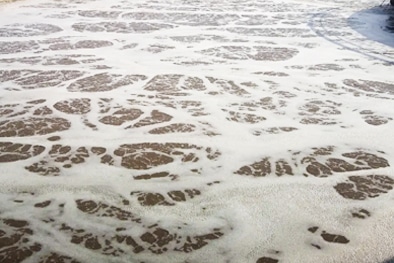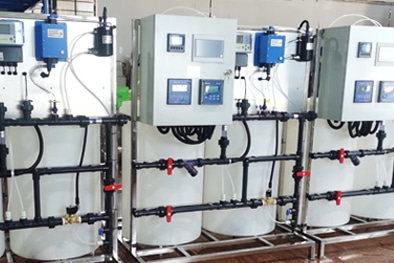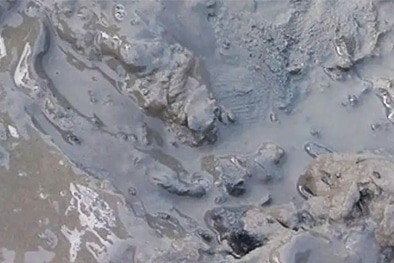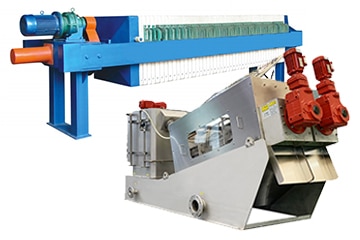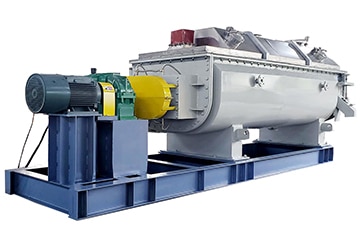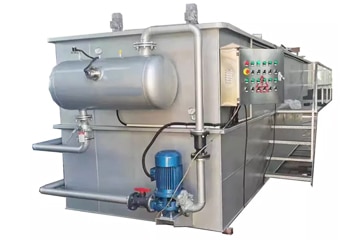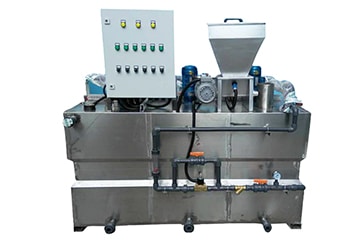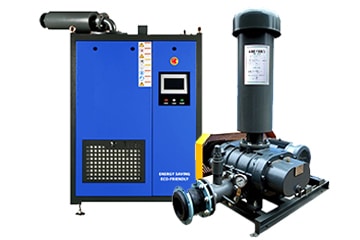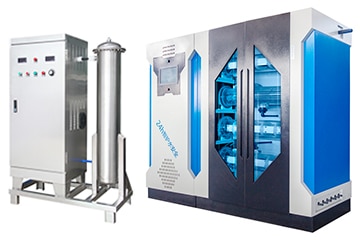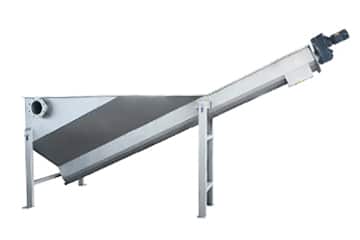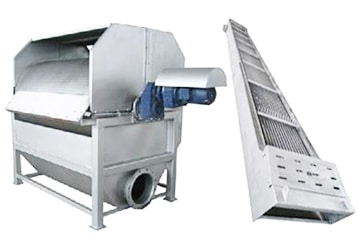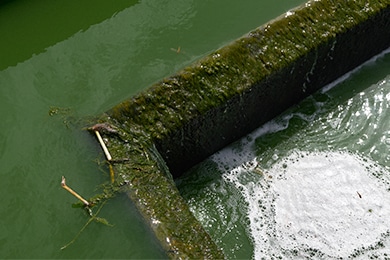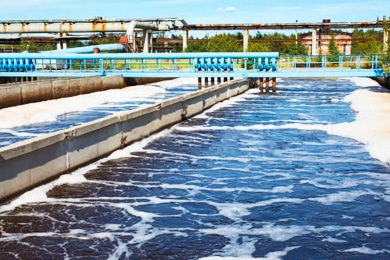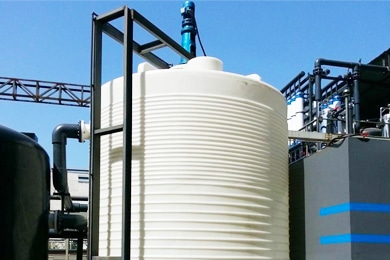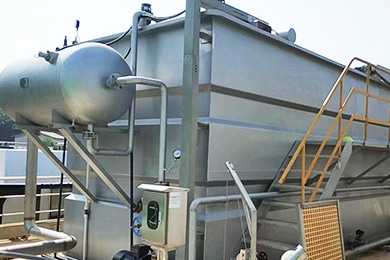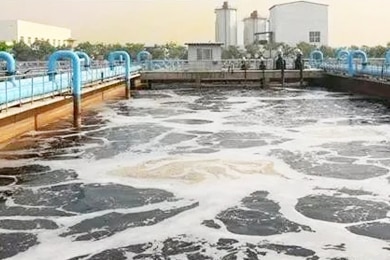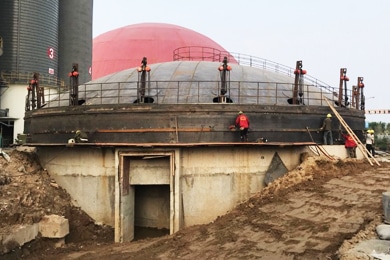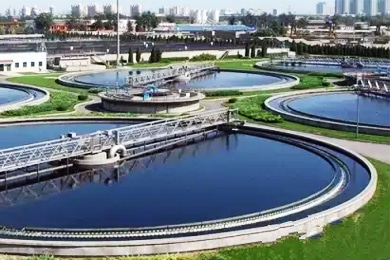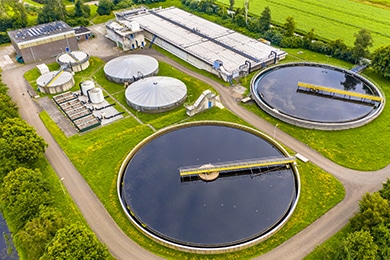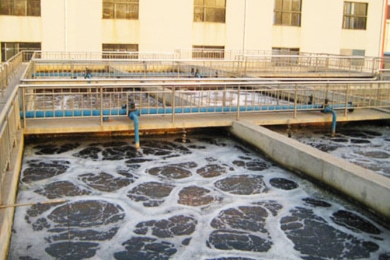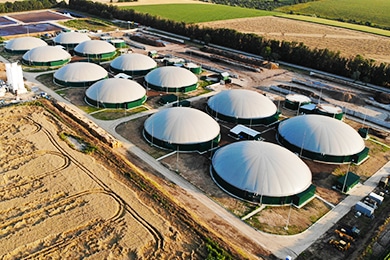Water Treatment Process
Process water treatment plant
Water treatment is the process of taking physical, chemical or biological measures to bring water quality up to certain use standards. End uses may be drinking, industrial water supply, irrigation, swimming pools, etc. Water treatment removes contaminants and unwanted constituents, or reduces their concentration, so that the water is suitable for its desired end use.
Water treatment includes two main types of water treatment, wastewater treatment and drinking water treatment, which can also be subdivided into two types, wastewater treatment and water reuse. When processing raw water for domestic or industrial use, it is called feed water treatment. When processing wastewater, it is called wastewater treatment. The purpose of wastewater treatment is for the discharge (into a body of water or land) or reuse of wastewater.
The wastewater treatment process generally consists of the following three levels of treatment: primary treatment is it removes grit and fat, iron ions, manganese ions, oil and grease contained in the wastewater through mechanical treatment, such as grating, sedimentation or air floatation. Secondary treatment is biological treatment where the pollutants in the sewage are degraded and transformed into sludge by the action of microorganisms. Tertiary treatment is the deep treatment of the wastewater, which includes nutrient removal and disinfection of the wastewater by chlorination, UV radiation or ozone technology.
The water treatment process consists of the following 9 steps, some of which are not all inclusive depending on the treatment objectives and water quality.
Collection
First, raw water is transported to the water treatment plant via pumps and pipelines. Water treatment facilities within water treatment plants are often designed to utilize gravity flow whenever possible to reduce the cost of pumps. Many water treatment plants utilize water from more than one source. Groundwater is blended with surface water to improve the quality of the final product.
Screening and Straining
Water contains different amounts of suspended and dissolved substances, including Turbidity, color, taste, odor, microorganisms, fish, plants, trash, etc. Some of these larger items can obstruct the equipment in the treatment process, such as tree branches getting stuck in the pump impeller. Therefore, the first process in conventional water treatment is to screen or filter out these larger volumes of debris. This is usually done by a bar screen, which is placed in front of the water source inlet. As the water passes through the screen, the larger items are trapped on the screen. As water passes through it, large items are trapped on the screen. These screens must be raked or cleaned off periodically.
Aeration
After screening, the water is aerated (supplied with air) to absorb oxygen from the air. This process helps to expel soluble gases such as carbon dioxide and hydrogen sulfide (both are acidic, so this process makes the water less corrosive) and any gaseous organic compounds that are detrimental to the water. Aeration also removes iron or manganese by oxidizing these substances to insoluble forms. Once in the insoluble form, these substances can be removed by filtration.
Chemical Addition
Once raw water is received at the treatment plant, chemicals are added to help cause suspended particles floating in the water to clump together and form heavier, larger colloidal particles, often called flocs.
Coagulation and Flocculation
Usually fast mixing equipment (mixer agitator) is used to add coagulants (alum, polymer, etc.) to the water to speed up the mixing. The water is allowed to come in contact with the flocs formed to increase their volume. The continuous mixing must be gentle to allow the floc to grow and gain weight, but fast enough to keep it in suspension until it is ready to be allowed to settle in the clarifier. The process of adding a chemical to keep the suspended material in suspension is known as flocculation or coagulation.
Sedimentation and Clarification
Once the flocculation process is complete, the water flows over the weir in the flocculator to the center of the clarifier, or settling tank. As the water flows toward the weir, the larger flocculent particles are allowed to settle to the bottom of the clarifier. A rake continuously passes through the bottom of the clarifier, scraping the settled floc to the center of the clarifier. The settled floc is scraped into the center of the unit. A pump is used to pull the settled “sludge” out of the clarifier and send it to the settling tank. The water passing through the weir is collected and transferred to a filter.
Filtration
The clarified water enters the filter from the top. Gravity pulls the water down and through the filter to collect in the drainage system at the bottom of the unit. The most common materials used in filters are sand and gravel. Many conventional plants now use granular activated carbon as the preferred media because it not only provides excellent mechanical filtration of particulate matter, but also removes organic compounds that can cause taste and odor problems.
Disinfection
The filtered water becomes very clear and clean. But there are still bacteria and viruses left. For this reason disinfection is required. The most common disinfection process is chlorination. Chlorine gas comes in many different forms, including chlorine gas, chlorine dioxide, and hypochlorite (bleach). Waterworks continuously monitor the chlorine levels in treated water to ensure that the water is thoroughly disinfected.
Finally Distribution
The final water is pushed through the distribution system (underground pipes) throughout the city. Distribution System The system consists of large pumps at the treatment plant, overhead storage tanks, piping, hydrants, valves and other equipment.

